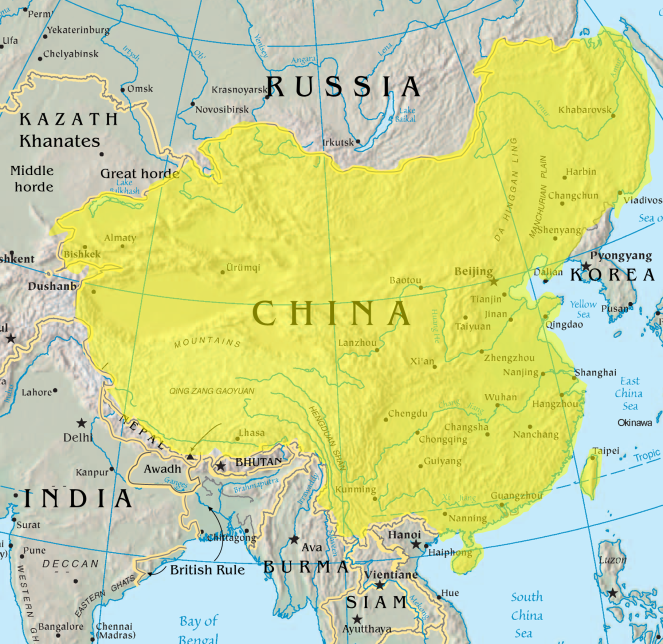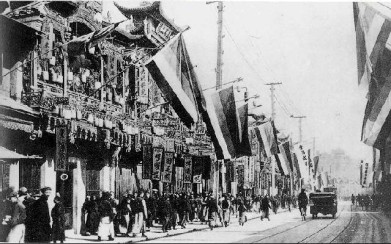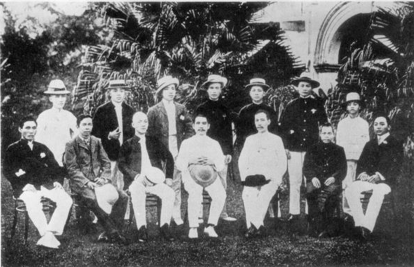The Chinese Revolution of 1911
In October of 1911, a group of revolutionaries in southern China led a successful revolt against the Qing Dynasty, establishing in its place the Republic of China and ending the imperial system.

The Xinhai Revolution, or the Hsin-hai Revolution, also known as the Revolution of 1911, or the Chinese Revolution, was a revolution that overthrew China’s last imperial dynasty (the Qing dynasty), and established the Republic of China (ROC). The revolution was named Xinhai (Hsin-hai) because it occurred in 1911, the year of the Xinhai (辛亥) stem-branch in the sexagenary cycle of the Chinese calendar.
The revolution consisted of many revolts and uprisings. The turning point was the Wuchang Uprising onOctober 10, 1911, that was a result of the mishandling of the Railway Protection Movement. The revolution ended with the abdication of the six-year-old “Last Emperor”, Puyi, on February 12, 1912, that marked the end of 2,000 years of imperial rule and the beginning of China’s early republican era (1912–16).
The revolution arose mainly in response to the decline of the Qing state, which had proven ineffective in its efforts to modernize China and confront foreign aggression, and was exacerbated by ethnic resentment against the ruling Manchu minority. Many underground anti-Qing groups, with the support of Chinese revolutionaries in exile, tried to overthrow the Qing. The brief civil war that ensued was ended through a political compromise between Yuan Shikai, the late Qing military strongman, and Sun Yat-sen, the leader of the Tongmenghui (United League). After the Qing court transferred power to the newly founded republic, aprovisional coalition government was created along with the National Assembly. However, political power of the new national government in Beijing was soon thereafter monopolized by Yuan and led to decades of political division and warlordism, including several attempts at imperial restoration.
The Republic of China in Taiwan and the People’s Republic of China on the mainland consider themselves the legitimate successors to the Xinhai Revolution and revere the ideals of the revolution includingnationalism, republicanism, modernization of China and national unity. October 10 is commemorated inTaiwan as Double Ten Day, the National Day of the ROC. In mainland China, Hong Kong andMacau, the same day is usually celebrated as the Anniversary of the Xinhai Revolution. Many overseas Chinese also celebrate the anniversary in Chinatowns across the world.
Background
After suffering its first defeat to the West in the First Opium War in 1842, the Qing court struggled to contain foreign intrusions into China. Efforts to adjust and reform the traditional methods of governance were constrained by a deeply conservative court culture where ethnic Manchu rulers did not want to give too much authority to the Han Chinese majority.In the wars against the Taiping (1851–64), Nian (1851–68), Muslims of Yunnan (1856–68) and the Northwest (1862–77), the traditional Manchu armies proved themselves incompetent, and the court came to rely on local Han armies.
Following defeat in the Second Opium War, the Qing tried to modernize by adopting certain Western technologies through the Self-Strengthening Movement from 1861. In 1895, China suffered a serious defeat during the First Sino-Japanese War. This demonstrated that traditional Chinese feudal society also needed to be modernized if the technological and commercial advancements were to succeed. In 1898, theGuangxu Emperor was guided by reformers like Kang Youwei and Liang Qichao for a drastic reform in education, military and economy under the Hundred Days’ Reform.[6] The reform was a failure, as it was ended prematurely by a conservative coup led by Empress Dowager Cixi. The Guangxu Emperor, who had always been a puppet emperor dependent on Cixi, was put under house arrest in June 1898. Reformers Kang and Liang would be exiled. While in Canada, in June 1899, they tried to form theEmperor Protection Society in an attempt to restore the emperor.[4] Empress Dowager Cixi mainly controlled the Qing dynasty from this point on. The Boxer Rebellion prompted another foreign invasion of Beijing in 1900 and the imposition of unequal treaty terms, which carved away territories, created extraterritorial concessions and gave away trade privileges. Under internal and external pressure, the Qing court began to adopt some of the reforms. The Qing managed to maintain its monopoly on political power by suppressing, often with great brutality, all domestic rebellions. Dissidents could operate only in secret societies and underground organizations, in foreign concessions or in exile overseas.




